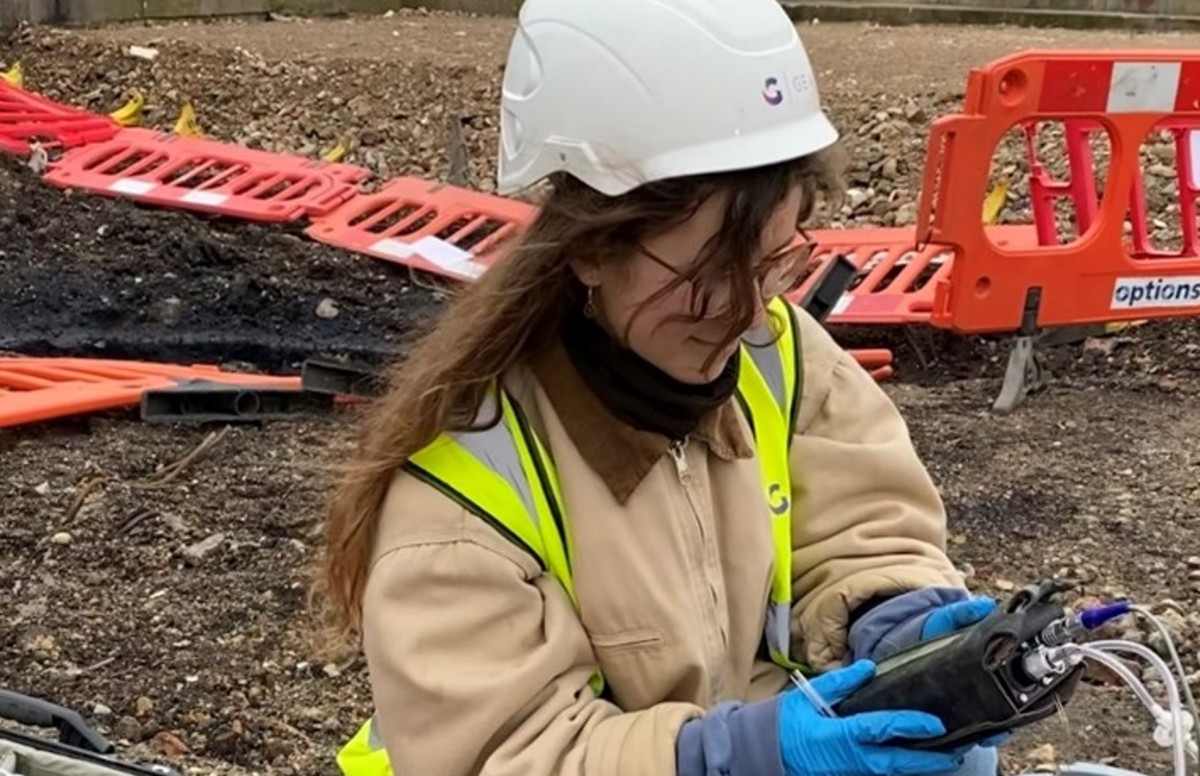Geotheta for Beginners
The Geotheta Ideas
Table of ContentsAll About GeothetaThe Best Strategy To Use For GeothetaSee This Report about GeothetaThe Main Principles Of Geotheta The smart Trick of Geotheta That Nobody is Talking About

They conduct site examinations, gather examples, do laboratory tests, and analyze data to assess the suitability of the ground for building and construction projects - Engineer of Record. Based on their findings, geotechnical designers give recommendations for structure layout, incline stability, preserving frameworks, and reduction of geotechnical dangers. They team up with other professionals, such as designers, architectural designers, and building and construction groups, to make certain that geotechnical factors to consider are integrated into the total task layout and implementation
By evaluating the behavior and residential or commercial properties of soil and rock, they can identify potential geotechnical hazards such as landslides, soil settlement, or slope instability. Their know-how helps avoid failings or accidents that could endanger lives and residential or commercial property. Here are some detailed obligations and responsibilities of a geotechnical designer: Site Examination: Geotechnical designers conduct site investigations to collect data on subsurface conditions.
They interpret the data to recognize the homes and habits of the dirt and rock, including their toughness, leaks in the structure, compaction characteristics, and groundwater problems. Geotechnical Evaluation and Layout: Geotechnical engineers evaluate the data accumulated throughout website examinations to analyze the security and viability of the website for building and construction tasks. They execute geotechnical estimations and modeling to assess factors such as bearing capability, negotiation, slope security, side earth stress, and groundwater circulation.
Geotheta - The Facts
Foundation Layout: Geotechnical designers play a crucial role in developing foundations that can securely sustain the intended framework. They assess the soil problems and lots needs to figure out the appropriate structure kind, such as shallow foundations (e.g., grounds), deep structures (e.g (https://myanimelist.net/profile/geotheta)., heaps), or specialized methods like soil renovation. They think about elements such as negotiation limits, bearing capacity, and soil-structure communication to create optimum foundation designs
They evaluate construction strategies, display site tasks, and perform field evaluations to validate that the design referrals are complied with. If unforeseen geotechnical concerns develop, they analyze the circumstance and provide suggestions for remediation or changes to the style. Risk Analysis and Reduction: Geotechnical designers evaluate geotechnical threats and risks connected with the project website, such as landslides, liquefaction, or soil erosion.

Cooperation and Communication: Geotechnical engineers function carefully with other specialists included in a project, such as engineers, architectural engineers, and construction groups. Efficient interaction and partnership are necessary to integrate geotechnical factors to consider into the general task style and construction process. Geotechnical designers supply technological experience, answer queries, and make certain that geotechnical demands are fulfilled.
Some Known Details About Geotheta
Right here are some kinds of geotechnical designers: Structure Designer: Foundation engineers specialize in creating and analyzing structures for frameworks. They assess the dirt conditions, load demands, and website features to determine the most proper structure type and style, such as shallow structures, deep structures, or specialized strategies like pile foundations.
They examine the aspects affecting incline security, such as soil properties, groundwater problems, and slope geometry, and develop techniques to stop incline failures and alleviate risks. Quake Designer: Earthquake designers concentrate on examining and designing frameworks to withstand seismic pressures. They assess the seismic hazard of a website, review soil liquefaction possibility, and create seismic layout requirements to guarantee the security and strength of structures throughout quakes.
They perform area screening, gather examples, and evaluate the collected information to identify the dirt properties, geologic developments, and groundwater conditions at a website. Geotechnical Instrumentation Designer: Geotechnical instrumentation designers focus on surveillance and measuring the actions of soil, rock, and frameworks. They install and maintain instrumentation systems that keep an eye on aspects such as soil negotiation, groundwater levels, incline movements, and architectural displacements to assess efficiency and supply early cautions of prospective concerns.
How Geotheta can Save You Time, Stress, and Money.
They carry out tests such as triaxial tests, consolidation examinations, direct shear examinations, and permeability tests to gather data for geotechnical evaluation and style. Geosynthetics Engineer: Geosynthetics engineers specialize in the layout and application of geosynthetic materials, such as geotextiles, geogrids, and geomembranes. They utilize these products to improve dirt stability, strengthen inclines, offer drainage services, and control disintegration.
They often tend to be investigative individuals, which indicates they're intellectual, introspective, and investigative. They wonder, methodical, reasonable, analytical, and logical. Several of them are additionally social, implying they're kind, charitable, cooperative, patient, caring, valuable, empathetic, skillful, and pleasant. Does this audio like you? Take our cost-free career test to figure out if geotechnical engineer is among your top career matches.
In the office setting, geotechnical engineers make use of specialized software program devices to do you can try this out computations, develop designs, and evaluate data. They prepare reports, review task specifications, connect with clients and employee, and coordinate task activities. The office setting provides a favorable environment for study, evaluation, and partnership with other specialists associated with the project.
A Biased View of Geotheta
They frequently check out project sites to carry out website investigations, evaluate geotechnical problems, and collect data for analysis. These gos to involve taking a trip to different locations, occasionally in remote or tough surfaces. Geotechnical designers might execute soil tasting, conduct examinations, and monitor building and construction activities to ensure that the geotechnical aspects of the job are being implemented properly.
Geotechnical designers additionally operate in specialized geotechnical labs. In these centers, they carry out experiments, carry out examinations on dirt and rock samples, and evaluate the design residential properties of the products. Geotechnical research laboratory designers function thoroughly in these environments, dealing with screening tools, running instruments, and tape-recording data. They work together with various other research laboratory staff to guarantee precise and trustworthy screening outcomes.